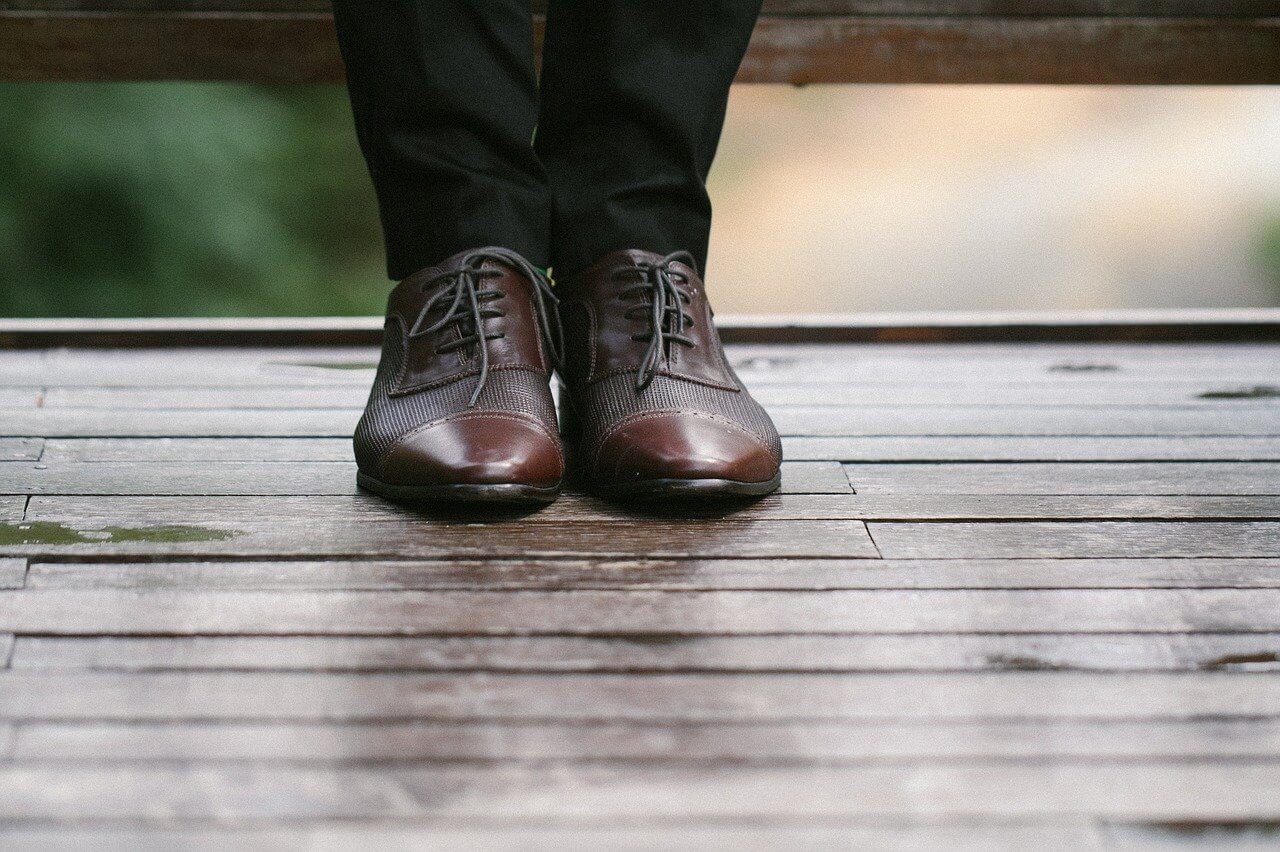I’ve had a pair of Loake’s Oxfords for years now; damn reliable shoes. But I can tell you first hand that when it comes to men’s dress shoe repairs, the heel is always the first to go. Unless you drag your feet, you’ll find yourself in need of new heels long before you need a new sole.
Whether it’s those hard office hallways or the cracked city sidewalks, there’s always something steadily chipping away at your shoe heel health. My advice to the busy business bro on the go? Find a highly experienced shoe guy – the crème de la crème of cobblers who you can trust with your pricey kicks.
For the more daring, dapper DIY dudes, this segment will show you how to extend the lifespan of all heels on your shoes. I’ll also walk you through a few heel maintenance tips as well as how to repair and replace worn down heels using regular tools at home. Read on to learn more about how to repair heels on mens shoes.
How To Extend The Lifespan Of Heels On Men’s Shoes

From the way you wear your shoes to the way you walk, there are a lot of simple mistakes we make in our day to day. You’d be surprised just how responsible you are for your heels wear and tear pattern. Have a look at some of the heel maintenance tips below and see which ones you’re guilty of absconding.
a) Using Shoe Horns
I know what you’re thinking; what’s a shoe horn got to do with the heel? Well, we all know it’s a thin curved item that helps you ease into your shoes faster and smoother. But did you also know that it prevents you from stressing and stepping on the rear part of your shoe.
This in turn prevents it from tearing or stretching which would cause irregular walking patterns and hence faster heel wear. It’s a domino effect people. As the POTC would say, part of the crew, part of the ship.
b) Keep That Rotation
We all have that favourite pair of shoes that we wear almost every day. Then, there’s that precious pair for special occasions, only worn two times a year. You know what I’m talking about. Well, it turns out you could be killing both of these pairs in different ways.
For your favourite pair, it’s death by overuse. Shoes need at least 2-3 days of rest after all day wear. For the precious pair in storage, the conditions could be causing damage to different components. Moisture, heat, or dust could cause irreparable damage. Make sure you store your shoes in ideal conditions and use shoe trees.
How To Repair Heels On Mens Shoes
When it comes to repairing shoe heels, women have it easier. For men, even replacing something as simple as the rubber tops can be a headache. Replacing the entire heel block? At least this guy in the below video makes it look way easier than it is.
If your shoe heels have already started wearing or ripping, here’s how to repair them in ascending order of severity.
i) Heel Guards
These are small pieces of rubber or plastic that you can add to the heels on your dress shoes. While it’s advisable to have them on before the heel actually wears, they prevent the heel from receiving any further damage.
ii) Replacing The Rubber Top Lift
If the top lift on your heel is worn but the block itself is still in good condition, then you’re in luck. You can simply replace the old one with a brand new rubber top. You’ll need the following tools and materials from here on out:
- Heat gun
- Small hammer
- Pliers
- Sandpaper
- Wood clamps (optional)
- Utility knife
- Masking tape
- Contact glue
- Rubber heels (buy or craft)
Now, the top lifts are usually both glued and nailed to the sole making it quite an intensive task. Use the pliers to remove the nails carefully as you’ll be using them again. You can use the heat gun to soften the rubber. Next, prepare the rubber replacement if you haven’t bought one. It’s as easy as cutting and measuring.
Proceed to hammer the nails in the rubber using a temporary wood support. Once you’re done, add contact glue to the heel and wit 10 minutes before nailing it to the block. Clamp the top lift and block together for 24 hours before cutting and sanding the rubber top for uniformity. Clean, wax, and you’re all set.
iii) Replacing The Heel Block And Sole
If the heel block is shot beyond repair, then she’ll have to go. Fortunately, replacing the heel block is something you can do. But more often than not, you might have to end up replacing the entire sole since they’re rate of wear is similar. The good news is, you’re still using the tools we mentioned above.
Start by pulling off the old sole with pliers and the heat gun. Clean off the undershoe with acetone to remove dirt and old glue. Sand the bottom thoroughly to prepare it for the new sole. Apply shoe sole adhesive to the new sole, press it against the shoe and wait for it to cure. You can clamp it with weights or a vice for stronger adhesion. This method also applies to reattaching a loose sole, only you won’t have to rip the entire thing off.
Checkout this YouTube video of an Oxford restoration where the guy literally disassembles an entire shoe.
For more shoe care tips, check out this guide on leather shoes.


